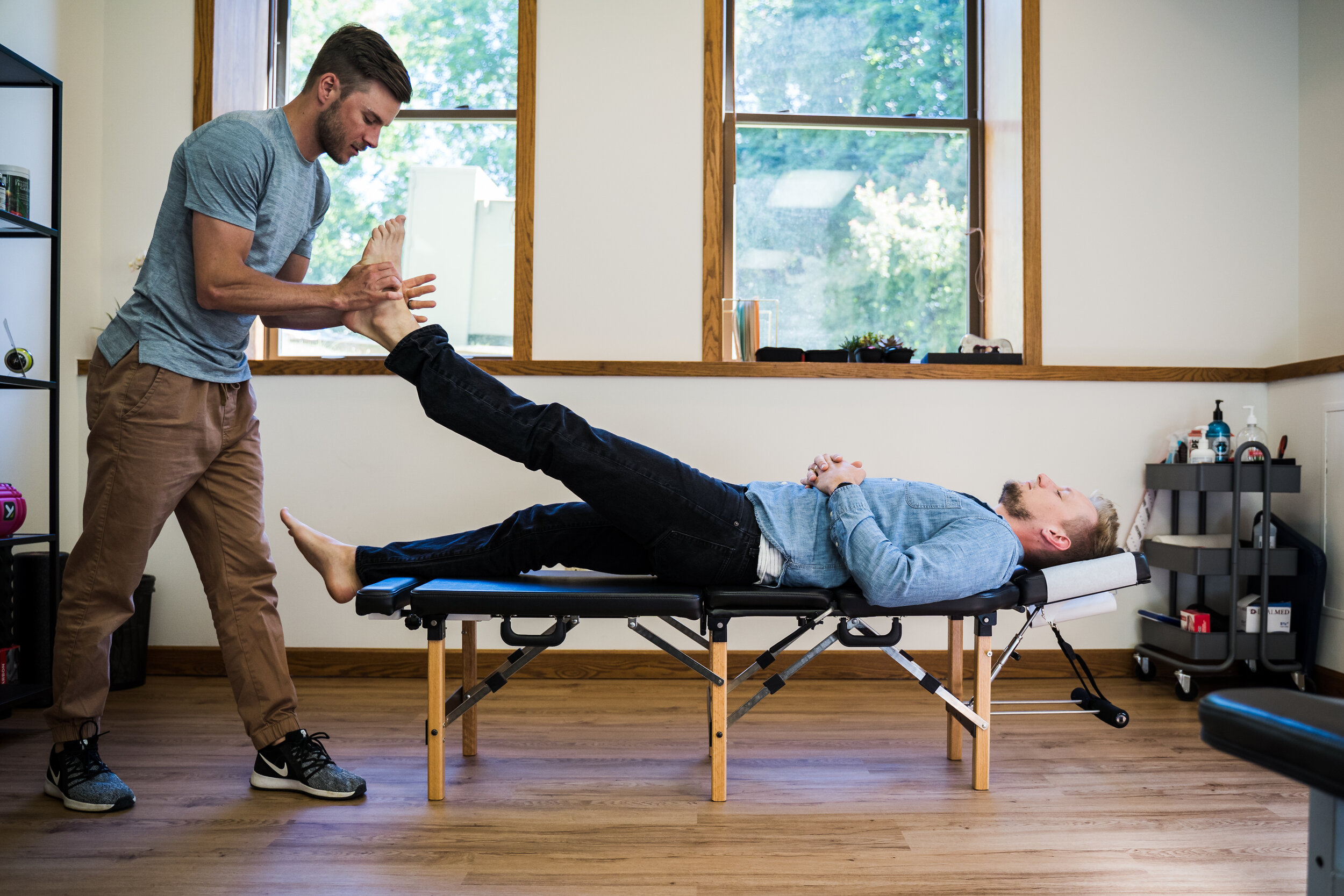Can a chiropractor treat Ankle Sprains?
Also known as a “twisted ankle” or “rolled ankle” - a sprain can be even more costly and painful than a broken ankle. The Chiropractors at Minnesota Movement are some of the most skilled health care providers in the area for treating extremities as a whole - especially sprained ankles. After a thorough assessment to address the severity of the damage, Dr. Reid and Dr. Claire will devise a specific plan for your treatment.
Treatment for Ankle Sprains:
Manual Extremity Adjustments to the ankle mortise joint if warranted
Kinesiology Taping to reduce edema and inflammation
Instrument Assisted Soft Tissue Manipulation (IASTM
RockBlades
Graston
Manual Muscle Therapy or Active Release Technique
Corrective Exercise Rehabilitation
At-home strategies to alleviate pain and symptoms
What is an sprained ankle?
The most common type of ankle sprain is an Inversion Ankle Sprain. This occurs when the lateral, or pinky-toe side of the foot, gets stuck down and momentum carries your body weight over the outside of your foot. The damage in this instance would be on the lateral side of your ankle.
An Eversion Ankle Sprain is the exact opposite of above, and much more rare. This type effects the medial (or inside) tissues of the ankle.
Grades of Lateral/Inversion Ankle Sprains:
Grade 1: Stretching or slight tearing of the ligament (usually the Calcaneofibular Ligament) with mild tenderness, swelling and stiffness. The ankle feels stable and it is usually possible to walk with minimal pain.
Grade 2: More severe sprain, but incomplete or partial tear with moderate pain, swelling and bruising. Although it feels somewhat stable, the damaged areas are tender to the touch and walking is quite painful. May have strain damage to both the Calcaneofibular and Anterior Talofibular Ligaments
Grade 3: This is a complete tear of the affected ligament(s) with severe swelling and bruising. The ankle is unstable and walking is likely not possible because the ankle gives out and there is intense pain. Usually requires medical imaging to diagnose.
Ankle Sprains can happen to anyone while doing something as active as playing basketball to something as mundane as walking in the back yard. And while both of these ankle sprains might be very similar diagnostically, we must treat the PERSON attached to the ankle. What we mean by that is; everyone’s ability is different and therefore their response to the sprained ankle is different. Here at Minnesota Movement, we will always formulate the best possible recovery plan specific for YOU.
Ankle Sprain Recovery and Rehab
The number one risk of spraining your ankle is a history of previous ankle sprains. With that in mind, our goal after your recovery is to teach you with exercise rehabilitation how to utilize the best muscle patterns and biomechanics to prevent future injury. The ligaments that secure our ankle to our leg get stretched out during a sprain. Often, these ligaments don’t have the ability to ‘tighten’ back up to provide your ankle it’s needed stability. So our goal of corrective exercises is to strengthen and build endurance of the muscles surrounding the ankle joint.



